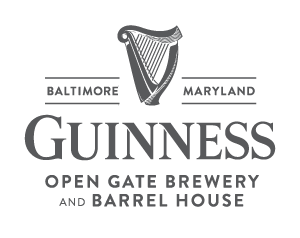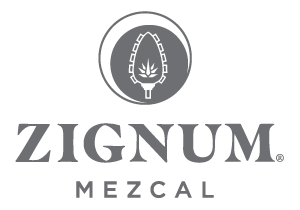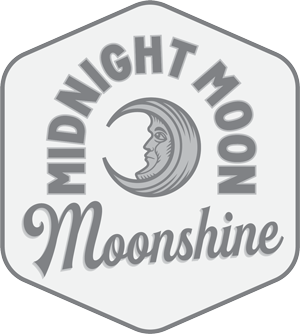
Last September, Guinness announced it would open a 15,000-square-foot brewery in Chicago’s Fulton Market neighborhood in time for St. Patrick’s Day 2023. The announcement came just three years after Guinness opened a similar facility in Baltimore. How, in an era when so many big breweries have been forced to scale back distribution and tap room expansions, has Guinness become even more of a global powerhouse?
“Guinness, through its focus, has built a horse,” says Luke Schmuecker, founder of Farnam West, a branding and creative agency. “It takes time to build that level of brand recognition and it takes focus to make sure you aren’t diluting it.”
Like many of today’s more ubiquitous brand names, Guinness started with just one person, Arthur Guinness; and, as with most big brands, it can also be hard to separate fact from company lore. No, Arthur Guinness didn’t ask God to help him start a beer brand to cure the Dublin streets of gin drunks, but it is true that, on December 31, 1759, he leased a run-down brewery in the city’s St. James’s Gate area at a rate of £45 per year (equivalent to about £9,348 or $12,200 today) for 9,000 years. It has long been said he learned his skills from his father, Richard, a servant who brewed for the Archbishop of Cashel, but that also seems apocryphal.
“Some say that Richard Guinness once accidentally roasted his barley too long and that the caramelized result was stronger and better than any other brew,” writes Stephen Mansfield in The Search for God and Guinness. But, in truth, “dark” beer had been made in Europe long before the Guinness family hit the scene, and porters were already being mentioned in the English press as early as the 1720s. In fact, Arthur mainly focused on lighter ales early on, before switching solely to a porter in 1799 because its popularity was sweeping the U.K.
“There was still another reason why devout Dubliners accepted Guinness’s stout,” wrote Kacy Burdette in a 1930 Fortune Magazine story on the Guinness family fortune; by then, the brewery made 115,000,000 gallons of beer per year and was already doing nothing to dispel any myths. “The brewery was at St. James’s Gate (a medieval entrance to Dublin said to be home to a holy well), and in the ancient days when Irish priests were sent across the channel to convert the heathen Britons, devout Celts gathered in that neighborhood to drink and bathe in the miraculous waters of St. James’s Holy Well. Be assured that no upright Church of England Guinness has ever attributed miraculous powers to Guinness’s stout. Even in Arthur Guinness’s time, the Holy Well of St. James’s was too polluted to use for anything more than cooling pipes. Just the same, the legend helped sell many a barrel.”
Arthur Guinness died in 1803 and his son, Arthur Guinness II, took over. By that point, Guinness was mostly sold in Ireland and England, but he wanted to cement his father’s legacy by taking the beer farther afield.
Unfortunately, it was not exactly an ideal time for expansion.

“Trans-ocean travel was extremely risky, hugely time-consuming and prohibitively expensive,” Ryan Philemon writes for Provi. Not to mention, Napoleon I was running roughshod over Europe. “Current events be damned, Arthur Guinness II shipped eight barrels of beer across the Atlantic to South Carolina,” writes Philemon.
These wooden casks of West Indies Porter—a hoppier style of porter, thought better able to survive sea voyages, and today sold as Foreign Extra Stout—arrived at U.S. ports on October 16, 1817. It was received by John Heavy, who is now suspected to have been a bottler or pub manager.
Guinness was the largest brewery in Ireland in 1833, but it wasn’t destined to stay on Irish shores. Due to the Grat Famine of the 1840s, Irish people found themselves living all over the world, and many still wanted their daily pint of Guinness.
The stout soon began getting shipped to international markets like Southeast Asia and, by the 1880s, Guinness was the largest brewery in the world, listed on the London Stock Exchange in 1886. Yet, it still managed to feel like Ireland’s little brewery that could.
“Guinness does a great job of being an old, massive brand that still maintains authenticity,” says Steven Grasse, founder of Quaker City Mercantile, an ad agency based in Philadelphia. “[The brand] rarely talks about their liquid, and when they do, it’s more to say, ‘Hey, we don’t sell stout. We sell Guinness.’ In that way, they literally don’t even allow themselves to have a competitor.”

Today, Guinness is sold in more than 150 countries and produced in 49, with production facilities in Canada, South Korea, Indonesia and beyond. It’s brewed in the Caribbean (Bahamas) and Africa (in Kenya, Uganda and Namibia). It is wildly popular in Nigeria, where the first non-U.K. Guinness brewery was established in 1962. Nigeria is now the world’s second-largest market for the stout.
“Guinness leans into being the embodiment of the Irish people,” adds Grasse. “Irish pubs are all over the world, from Alabama to Zaire, and all of them serve Guinness.”
Today, these bars most likely serve the nitrogen-fueled Guinness Draught that was created in 1959 to celebrate the brewery’s bicentennial. For Guinness fans, there’s surely something soothing about the fact that, no matter where you are in the world, Irish pub bartenders will undergo the same 119.5-second ritual pour. It’s a marketing tool unto itself.
Traditional advertising has also played a role in Guinness’s global esteem. The brand began advertising as early as 1794 in The Gentleman’s Choice magazine, with a slogan of “Health, peace, prosperity.” Today, vintage and faux vintage Guinness ads—especially the “Guinness is good for you” ads first launched in 1929 and illustrated for several decades by John Gilroy—are treated like works of art, displayed proudly in pubs, restaurants and even private homes.

Television commercials, first appearing in the 1950s with a tagline of “My Guinness, my goodness,” would take the brand into modern times, with countless iconic spots appearing throughout the following decades.
“It’s some of the best TV marketing of the 20th century,” says Grasse. “He specifically cites Jonathan Glazer’s artsy 1999 black-and-white commercial [“Good Things Come to Those Who Wait”] in which surfers ride waves among charging horses. In 2009, The Independent labeled it the “greatest advertising of all time.”
In 2014, Grasse’s Philadelphia ad agency was tasked by Diageo, Guinness’s parent company since 1997, with envisioning how the legendary brand could continue to flourish. Grasse and his team’s idea? Building an experimental craft brewery within Dublin’s St. James’s Gate. The Open Gate Brewery was such a hit in Europe leading to a 2% increase in overall sales across the continent—that Guinness decided to open that other one in Baltimore in 2018
Today, Guinness manages to exist in a rarefied air where it seems to be neither microbrewery nor macro, neither corporate nor craft. Beer aficionados are just as happy to down a few pints of Guinness as are the kinds of people who swear by fizzy yellow macro lagers. That’s because, despite selling 10 million pints literally every single day, the stout continues to be viewed as truly one-of-a-kind.
“What has allowed Guinness to stay relevant even with the rise of craft beer is through focus,” says Schmuecker. “When you hear ‘craft beer,’ there are a lot of different things that come to mind. When you hear ‘Guinness,’ you have a very clear mental image of the brand, the style and you know exactly what you’re getting.”

































